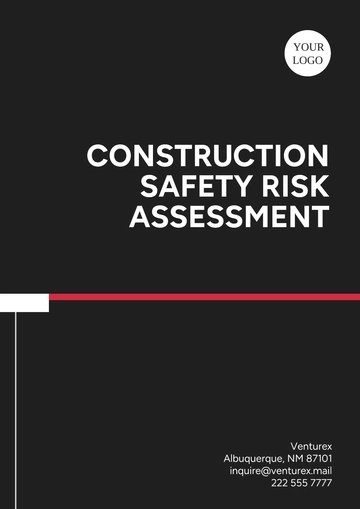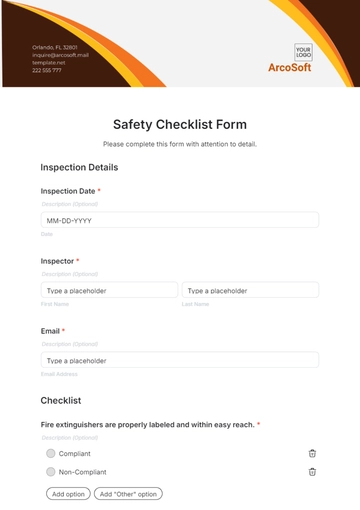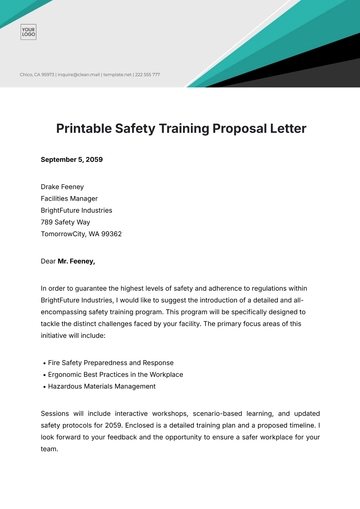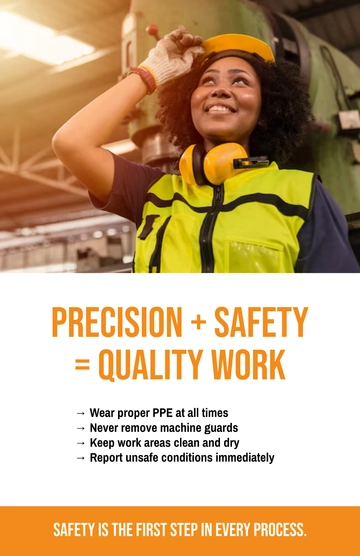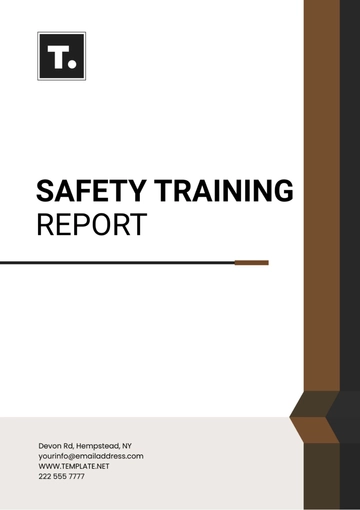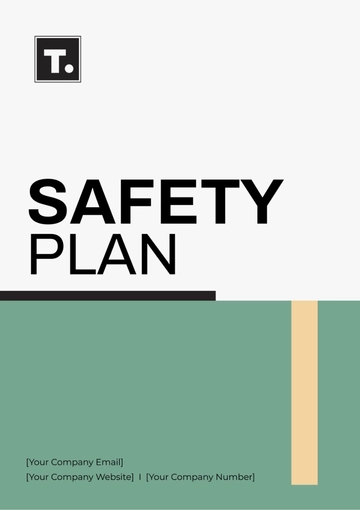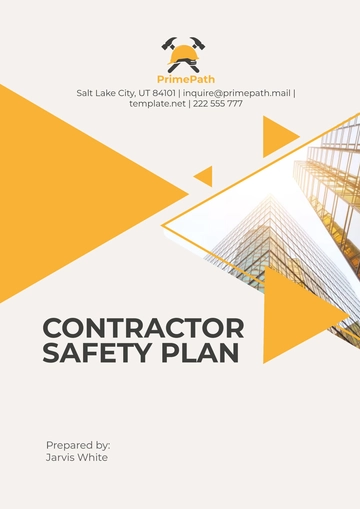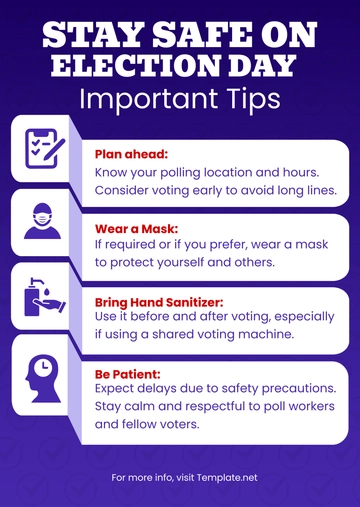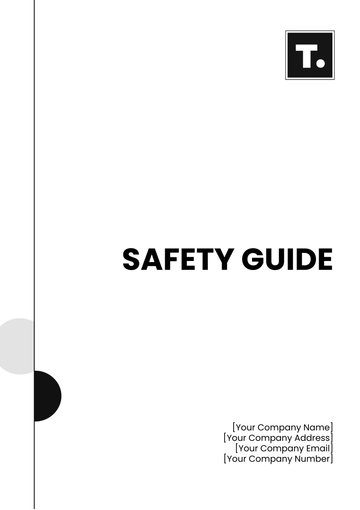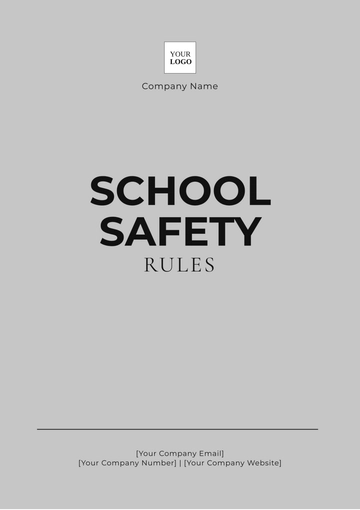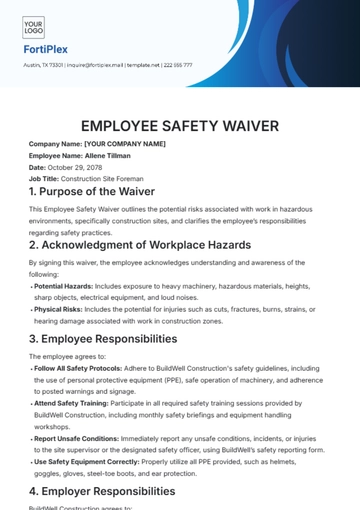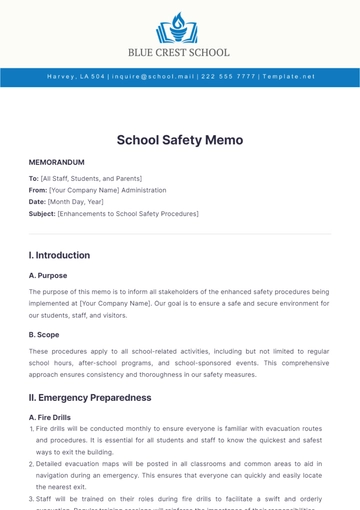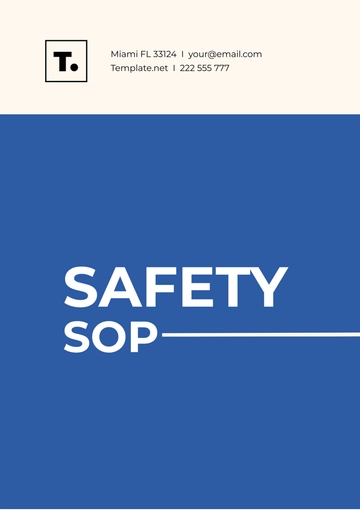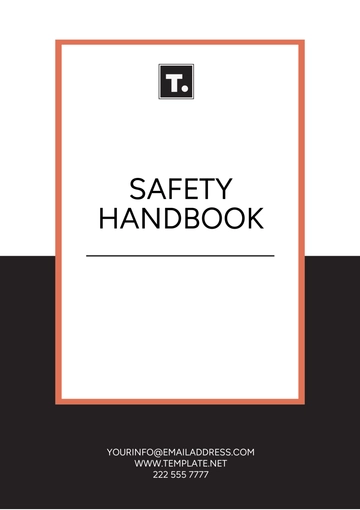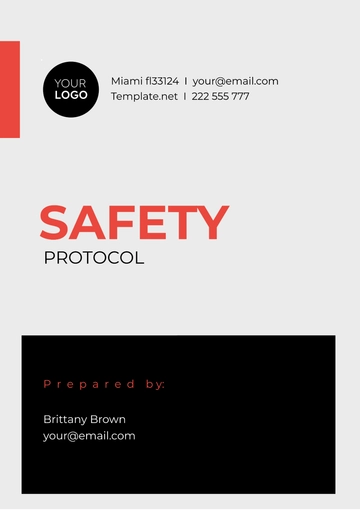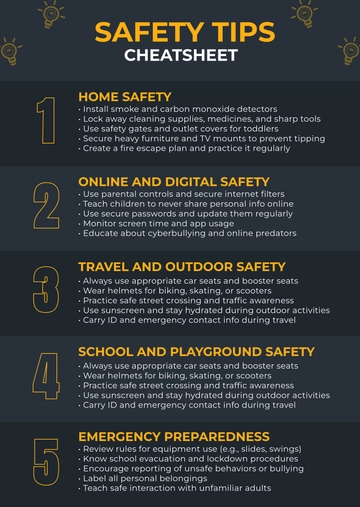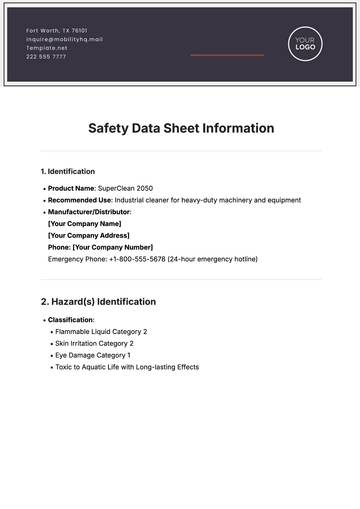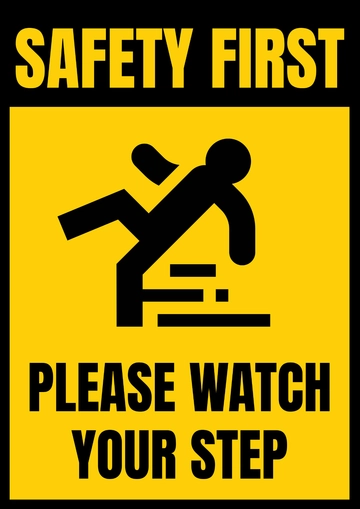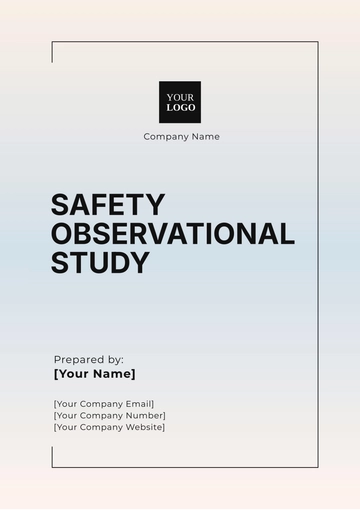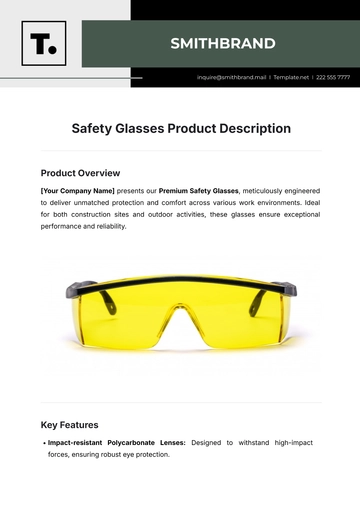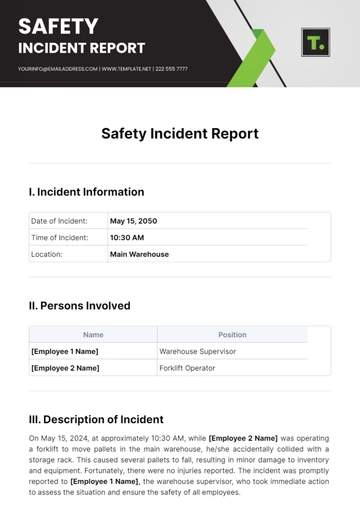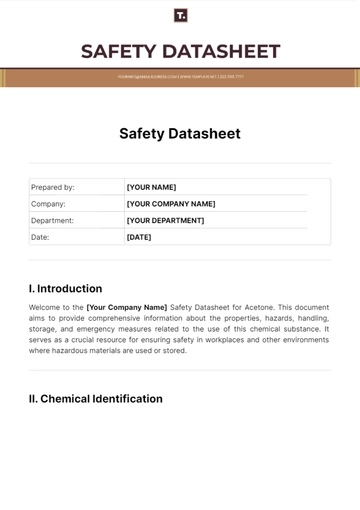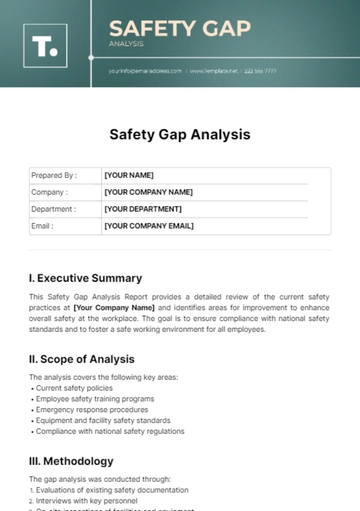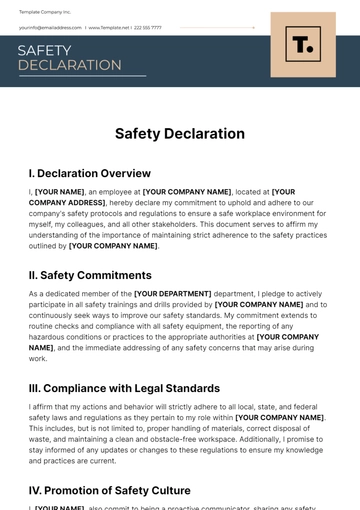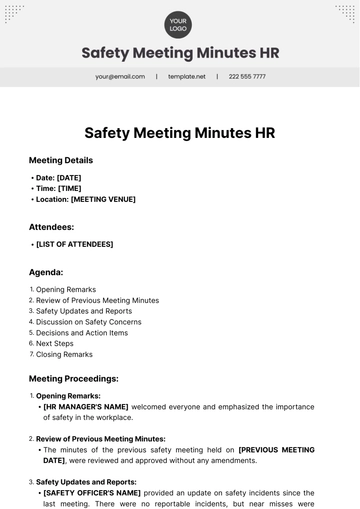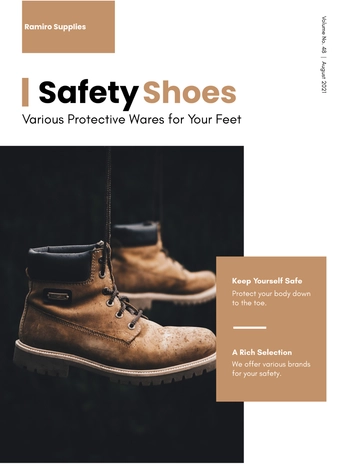Free Safety Audit Outline

Introduction
A. Purpose of the Audit
The audit aims to evaluate the effectiveness of existing safety protocols within [Your Company Name], focusing on identifying potential hazards and assessing compliance with safety regulations. The ultimate goal is to enhance workplace safety and reduce the risk of accidents and injuries. It will also provide a platform for continuous improvement in safety standards.
B. Scope
The audit covers all departments and operations of [Your Company Name], including production areas, warehouses, office spaces, and any external worksites managed by the company. This comprehensive scope ensures a thorough understanding of safety practices across various work environments and functions. It will also help in identifying department-specific safety needs.
Audit Team Composition
Lead Auditor
[Your Name], Senior Safety Officer, with a background in industrial safety and risk assessment. With over [No. of Years] of experience in the field, [Your Name] brings a wealth of knowledge and expertise to the audit process.
Team Members
[Jane Smith], Fire Safety Expert, brings specialized knowledge in fire prevention and emergency response.
[Complete Name], Occupational Health Specialist, focuses on employee health and ergonomics.
[Complete Name], Environmental Compliance Officer, ensures adherence to environmental regulations and sustainable practices.
Methodology
A. Document Review
Analysis of existing safety policies and procedures to understand the theoretical framework of safety in the workplace.
Review of previous audit reports and incident records to identify recurring issues and evaluate the effectiveness of implemented measures.
B. Site Inspections
Physical walkthroughs of facilities to observe operations, identify risks, and understand the practical implementation of safety protocols.
Interviews with employees for firsthand insights into safety practices and to gauge employee awareness and perception of safety measures.
C. Equipment and Process Evaluation
Inspection of machinery and equipment for safety compliance, focusing on maintenance records and safety features.
Assessment of manufacturing processes for potential hazards, including workflow analysis and material handling procedures.
Key Areas of Evaluation
A. Occupational Health and Safety
Compliance with OSHA standards, focusing on training, record-keeping, and workplace ergonomics.
Evaluation of personal protective equipment (PPE) usage, including availability, condition, and employee compliance.
B. Fire Safety
Assessment of fire alarms, sprinklers, and extinguishers to ensure they are in working order and meet regulatory requirements.
Review of emergency evacuation procedures, including drills and employee familiarity with emergency exits and assembly points.
C. Environmental Compliance
Inspection of waste disposal methods to ensure they are environmentally sound and comply with regulations.
Monitoring of emissions and effluents to assess environmental impact and adherence to emission standards.
Data Collection and Analysis
A. Safety Metrics
The number of reported accidents and near misses in the past year: [15] accidents, [30] near misses. This data will be used to identify high-risk areas and trends.
Frequency of safety training sessions: Quarterly. The effectiveness of these sessions in improving safety awareness will be evaluated.
B. Employee Feedback
Results from safety perception surveys conducted among [200] employees to understand their views and concerns regarding workplace safety.
Key issues highlighted: Inadequate PPE and lack of emergency drills. These insights will guide the development of targeted interventions.
Reporting
A. Audit Report Format
Executive Summary highlighting key findings, including major areas of concern and commendable practices.
Detailed analysis of each evaluation area, providing both quantitative data and qualitative observations.
Recommendations for improvement, prioritizing actions based on risk and feasibility.
B. Presentation to Management
Scheduled for [Date]. This meeting will be crucial in securing management buy-in for recommended changes.
Presentation of findings to [Your Company Name]’s senior management team, including actionable steps and proposed timelines.
Follow-up and Implementation Plan
A. Action Plan Development
Creation of a task force, including representatives from key departments, to address identified issues.
Timeline for implementation: 6 months post-audit, with interim milestones to ensure progress.
B. Monitoring and Review
Quarterly reviews to assess the effectiveness of implemented measures and make necessary adjustments.
Adjustment of strategies based on implementation outcomes, fostering a culture of continuous safety improvement.
Approval and Sign-Off
Signature of Lead Auditor: ___________________
Approval by [Your Company Name] Management: ___________________
Date of Approval: ___________________
- 100% Customizable, free editor
- Access 1 Million+ Templates, photo’s & graphics
- Download or share as a template
- Click and replace photos, graphics, text, backgrounds
- Resize, crop, AI write & more
- Access advanced editor
Enhance safety protocols with Template.net's Safety Audit Outline Template. This editable and customizable tool, powered by our Ai Editor Tool, simplifies the creation of comprehensive audit outlines. Tailor the outline effortlessly to fit your organization's safety requirements. Trust Template.net for reliable solutions in safety assessment and improvement.
